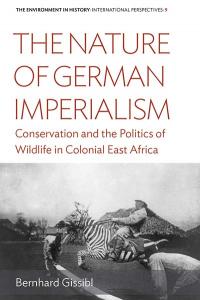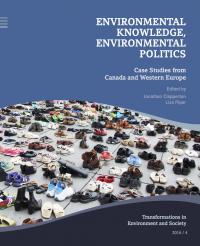Show search results for
"Green Colonialism and Forest Policies in South India, 1800-1900"
This article looks at the history of colonial forest policies in South India to argue that initially British destroyed most the accessible forests and used desiccationist fears to justify the colonial state’s monopolistic control over the forests.
"Zimbabwe’s Chinhoyi Caves: 1845-1945"
This study historicises environmental issues at the Chinhoyi Caves that are of contemporaneous resonance with the ecological crisis faced by the modern world. It deals with important themes like water-resource management, indigenous knowledge and its efficacy in the preservation of nature, colonialism and its environmental implications, forest use and deforestation, dislocation and displacement of indigenous people, and the interaction of the local with the global.
"Traditional knowledge in the Defence of the Cultural Landscape of Tlajomulco, Mexico"
The aim of this paper is to encourage conservation and prevent further deterioration around the traditional villages of Tlajomulco, Mexico by making more widely known the rich cultural landscape and the know-how of the inhabitants that has contributed to its conservation.
"Private Investment in Biodiversity Conservation. A Growing Trend in the Western World?"
The paper examines the increasing trend of philanthropic bodies and private individuals to invest in the conservation of Australia’s biodiversity. This is seen as part of a more general Western trend in which Australian organizations are linked to bodies such as the large US-based Nature Conservancy.
"Environmental Experiences of Chinese People in the Mid-Nineteenth Century Australian Gold Rushes"
Fei Sheng analyzes the ecological factors in China that spurred migration to Australia at a time when the discovery of gold as a natural resource made the country an ideal migration destination. He shows how Chinese migrants applied their environmental experience in a white settler colony.
"Survival Strategies and the Environment: The Siwalik Forest Commons, 19th and 20th Centuries"
This paper documents features of the traditional systems of shamilat van or forest commons in the Siwalik forests of the Punjab and analyses their contribution to the agro-ecosystems of both local agriculturalists and pastoralists and the reciprocal system of rights, rules, and responsibilities devised by the users to ensure the survival of the forests.
“War and Natural Resources in History: Introduction”
This paper examines how natural resources have been an important motive, target, and resource for warfare throughout human history.
"From Yellowstone to Australia and New Zealand: National Parks 2.0"
Following the establishment of the world’s first national park at Yellowstone (USA) in 1872, the concept was rapidly transferred to Australia, New Zealand and Canada. This article examines this second wave of adoption—and adaption—focussing on five case studies from Australia and New Zealand.
Indigenous Ecological Knowledge and the Politics of Postcolonial Writing
Clapperton evaluates three existing frameworks for understanding Indigenous and non-Indigenous claims to know the environment. While each framework has its strengths, they reinforce a binary between Indigenous and non-Indigenous knowledge and keep salvage paradigms of Indigenous knowledge alive. Clapperton calls for an enlarged definition of Indigenous knowledge that could account for boundary-crossing and Indigenous people “doing” science.







